Power
Sewn USB Plug

USB plugs are surprisingly easy to make yourself. You might have already seen some versions made directly on a PCB – either milled or etched (or scraped by hand) from copper laminated FSR board. But you can also sew a USB plug with some thick conductive thread (or wire) and some wood in which you […]
12 Ways to hold your coin-cells
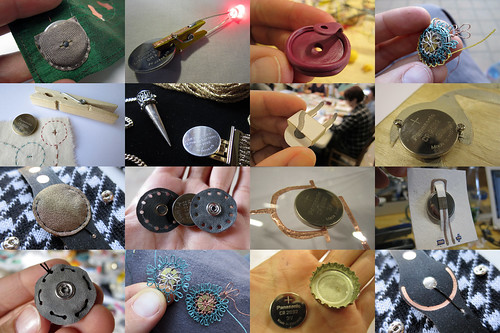
A collection of different ways to store coin-cell batteries (CR2032). One picture per method, with links to further documentation where available.
Conductive Fabric Microbial Fuel-Cell
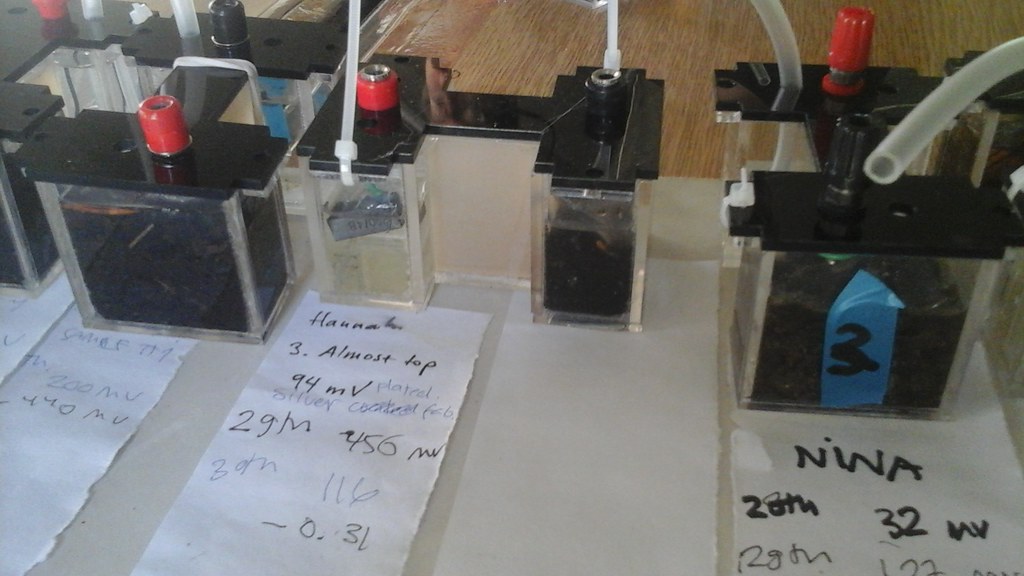
This experiment in making a two chamber battery from salty agar, water, microbes and a conductive fabric electrode was made during Interspecifics‘s Microbial Fuel-Cell workshop at PIFcamp 2016.
Battery Snap Pouches
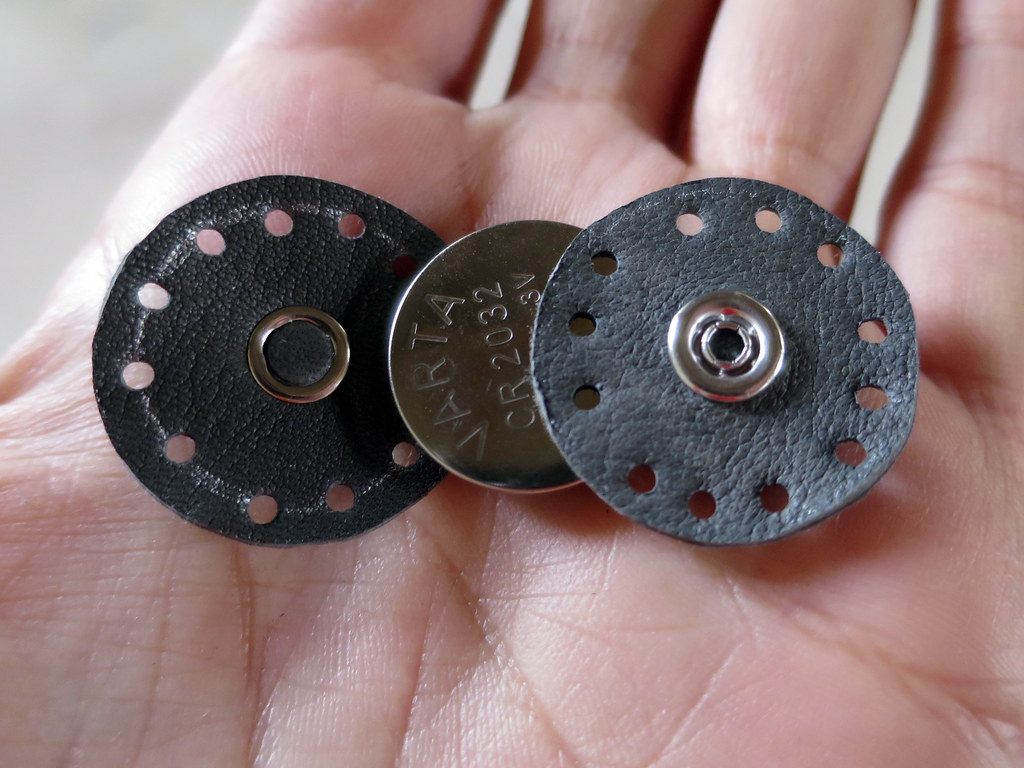
Leather pouches for various size batteries that extend the positive and negative power supply to male and female snap connectors. The punched holes for stitching the pouches together makes opening and closing the pouch to exchange the battery or debugging quicker and easier.
Igne Oyasi Coin-Cell Holder
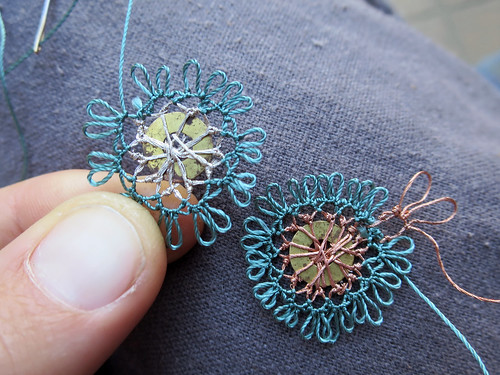
I’m not sure if this is a good idea… more photos >> https://www.flickr.com/photos/plusea/albums/72157645741017506
Plotted Flex AA Battery Holder
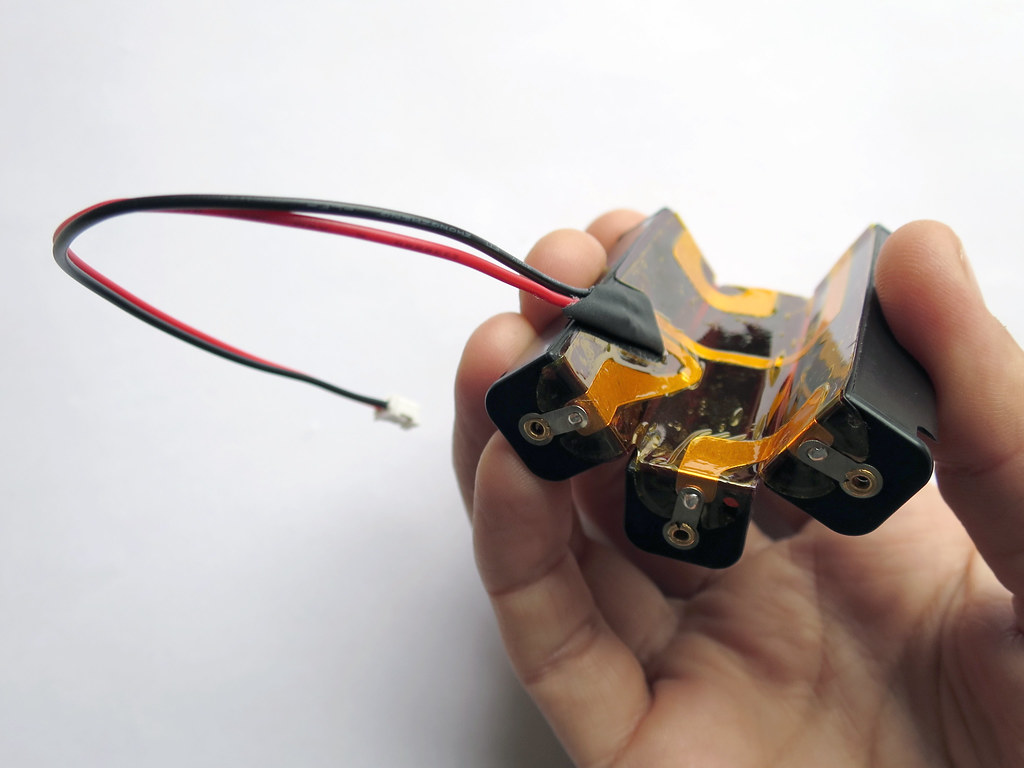
For those times when you’re in need of a flexible 3 x AA battery holder…
Clothspin Battery Holder
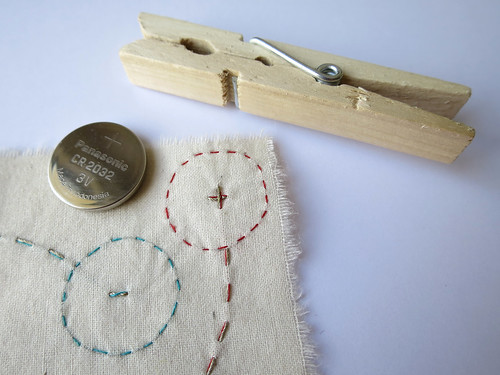
Inspired by the paper solution of folding the corner of a sheet of paper and using a binder clip to hold a coin-cell battery in place, this solution is inspired by Melissa Coleman’s suggestion that a clothspin would be more suitable to fabric…
Lasercut Stretchy Battery Pocket
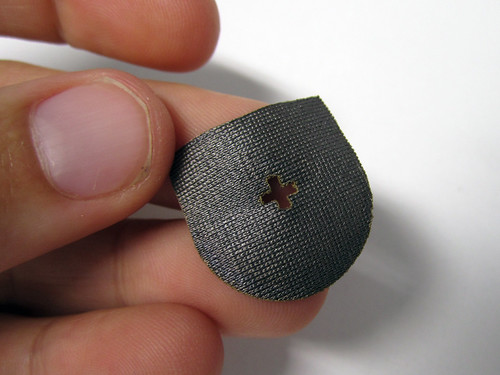
Lasercut from stretch conductive lycra, this coin-cell battery pocket makes for a super simple fabric power supply connection. A plus symbol lasercut into the center of the pouch indicates which way around the battery should be inserted.
Solar cells
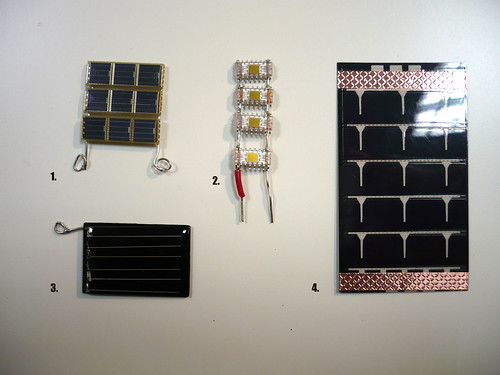
A solar cell or photovoltaic cell is a device that converts light directly into electricity by the photovoltaic effect. Sometimes the term solar cell is reserved for devices intended specifically to capture energy from sunlight, while the term photovoltaic cell is used when the light source is unspecified. Assemblies of cells are used to make […]
Battery 101
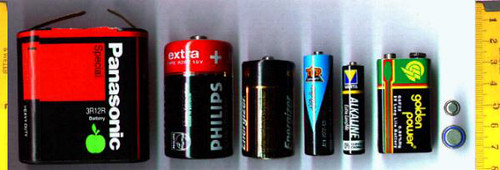
Here are some basic data (size, capacity) of various chargeable, non-chargeable batteries.
Sewable 3.3V Regulator
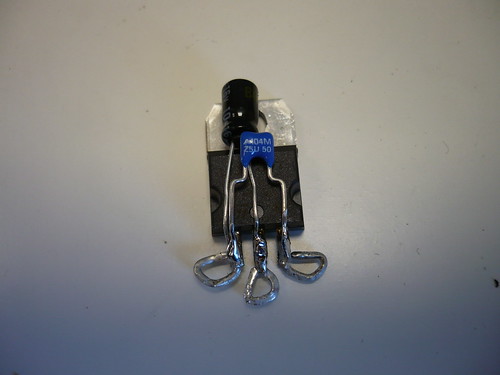
Regulators are simple and cheap way to create 5v or 3.3v (or any desired voltage if it is made for it) Often when you use a microcontrollers (i.e. Arduino) or a wireless communication module (i.e. Xbee, bluetooth), you need to supply exact voltage the device requires. This is an example of sewable 3.3v regulator and 9V battery […]
Lithium Polymer Batteries
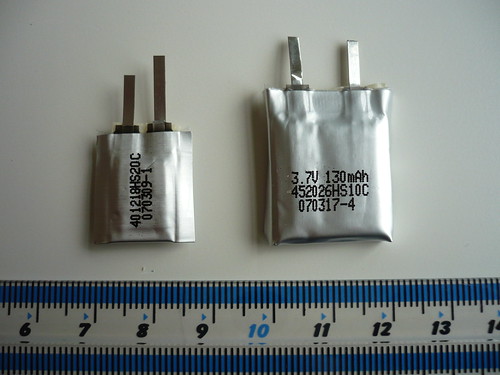
from Wikipedia: also: Lithium-ion polymer batteries, polymer lithium ion, Li-poly, Li-Pol, LiPo, LIP, PLI or LiP Rechargeable batteries which have technologically evolved from lithium-ion batteries. Ultimately, the lithium-salt electrolyte is not held in an organic solvent as in the lithium-ion design, but in a solid polymer composite such as polyethylene oxide or polyacrylonitrile. The advantages […]
DIY 3V Step-Up (Joule Thief)
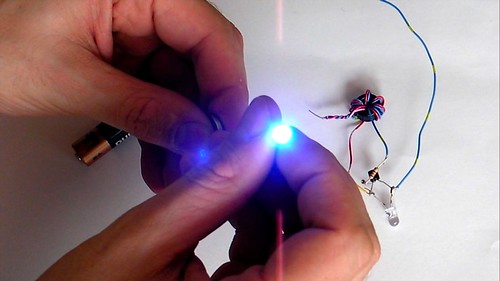
There is an interesting tutorial for how to make 3V step-up circuit by using simple component from. The project is called Joule Thief. With this module, you can light up LED (it needs 3V) with single AAA battery (1.5V).
Neoprene Battery Pouches
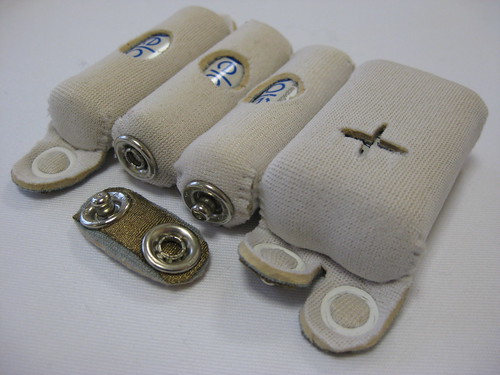
These neoprene battery pouches are made to fit different kinds of common batteries. They turn out to be very useful when prototyping and competing a range of different projects, not necessarily just wearable ones.







